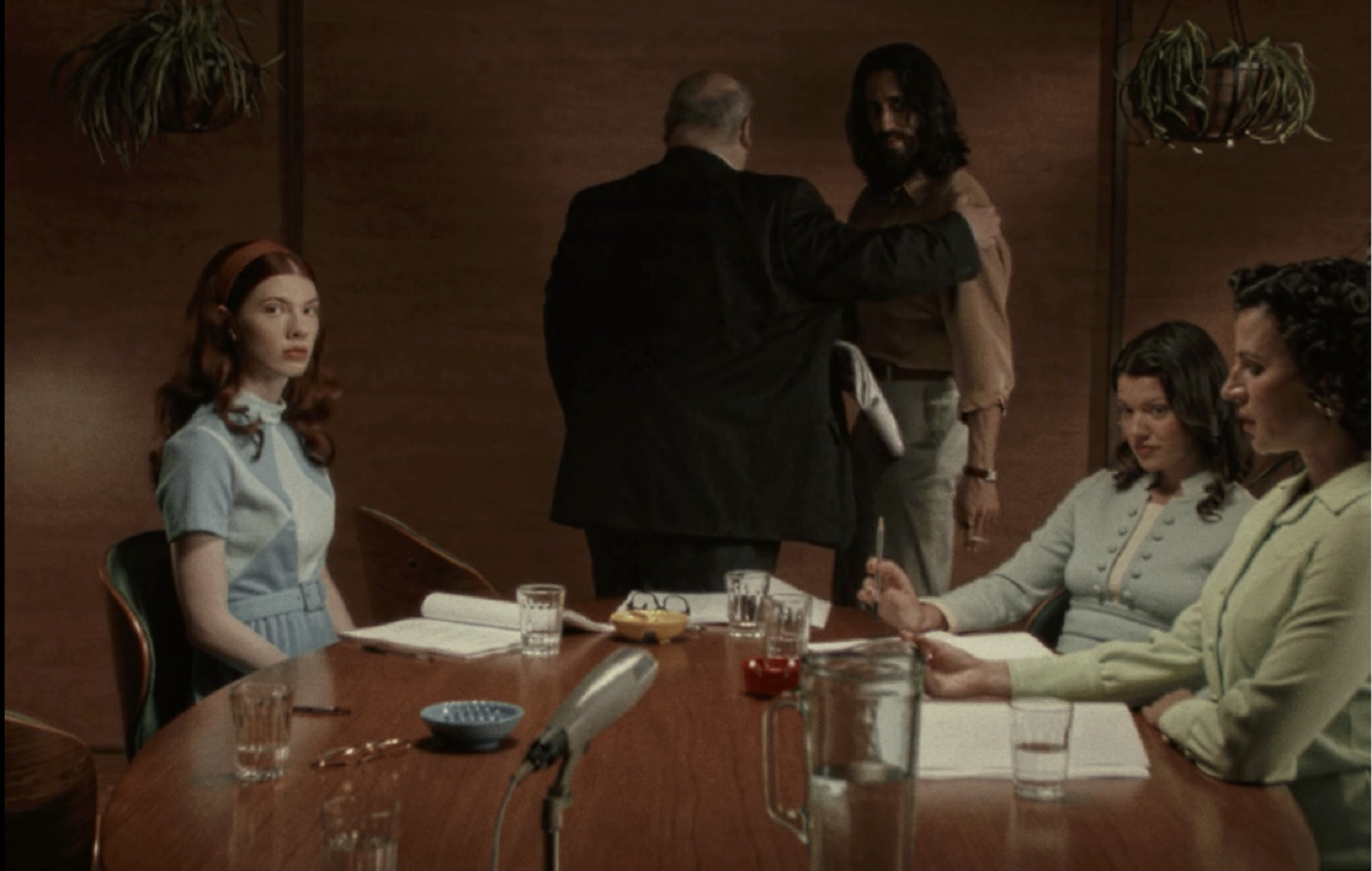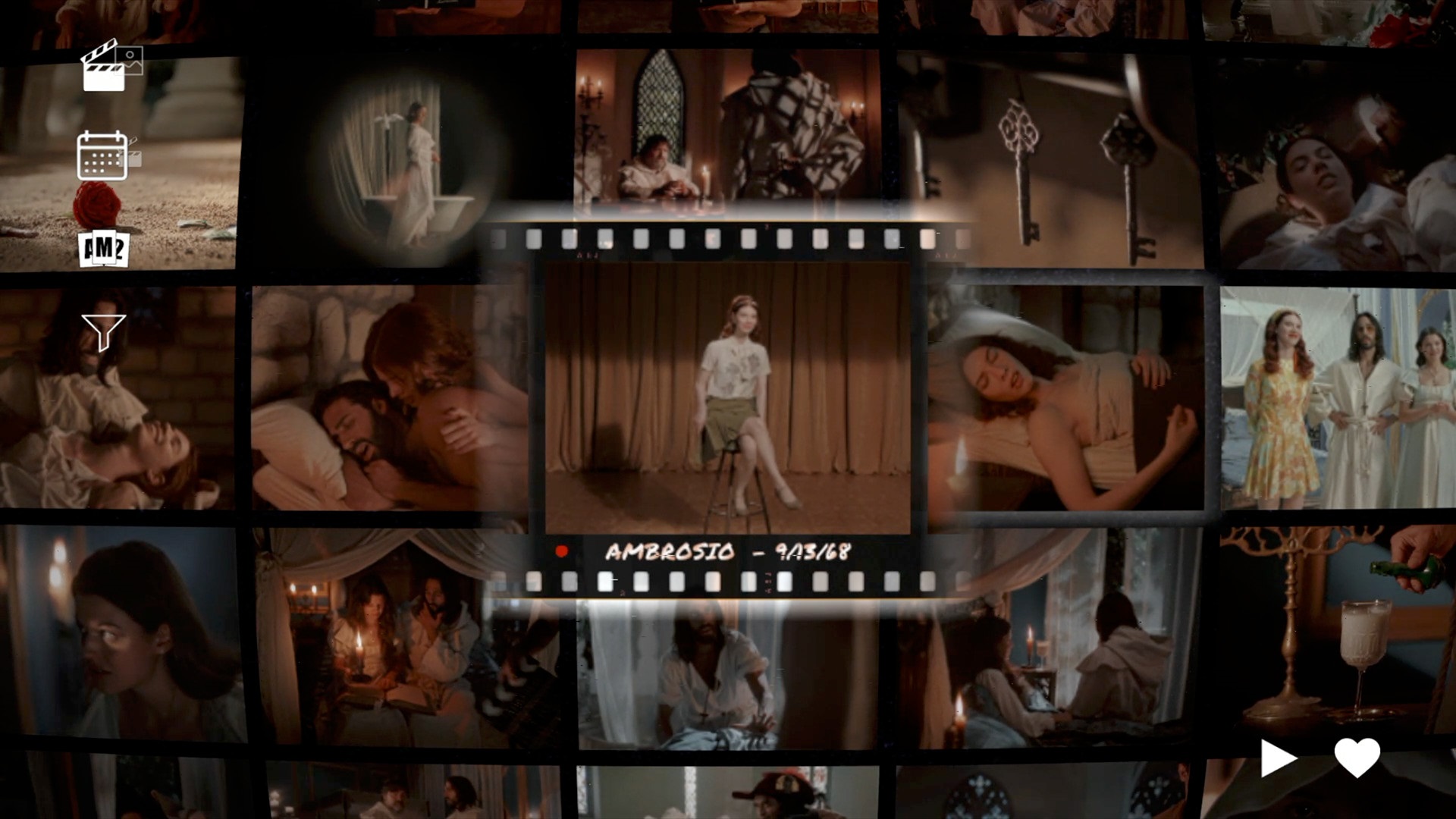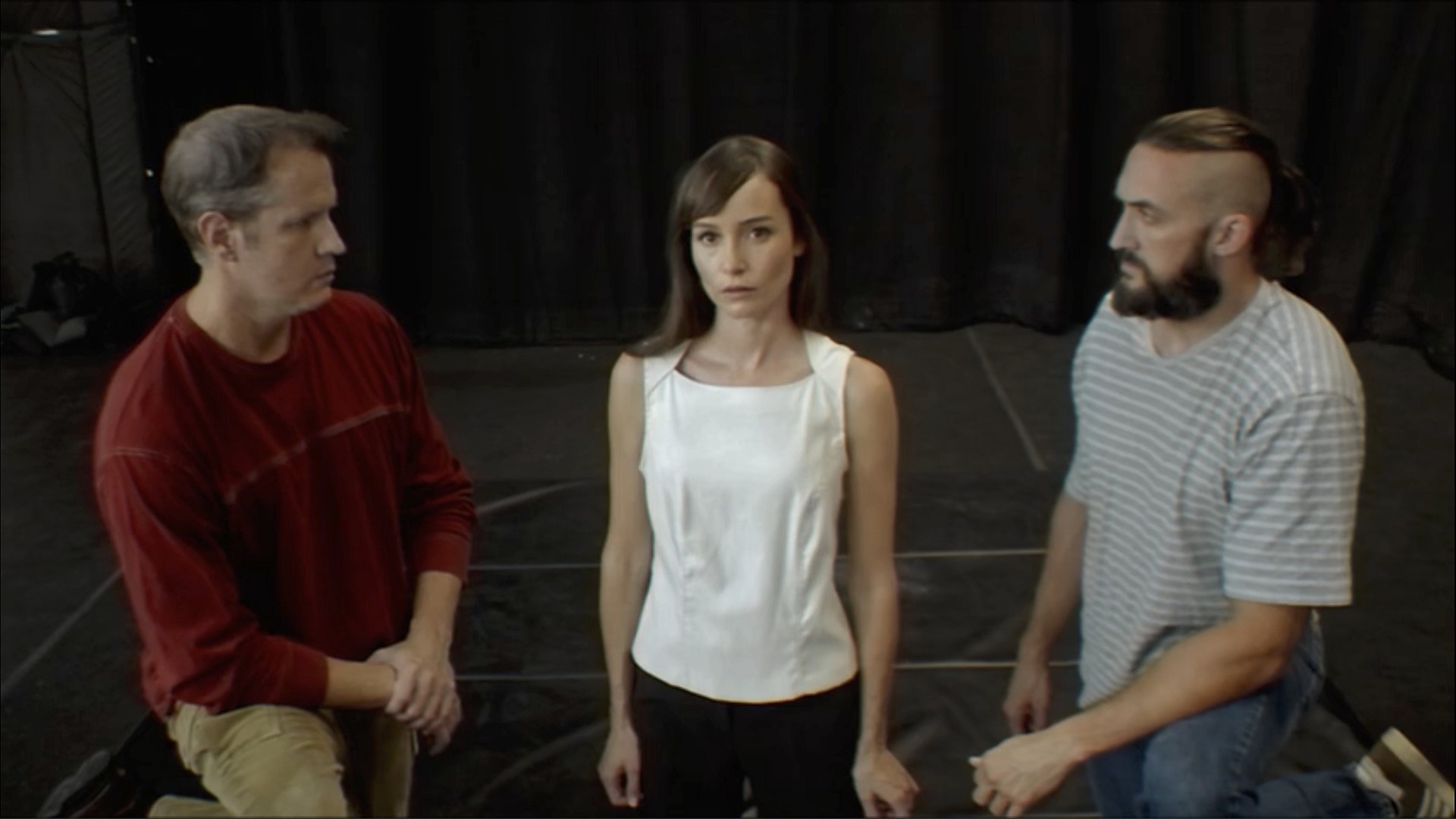I only got a taste of Immortality, but I'm already in love with its concept and sense of mystery
We try out Immortality from Her Story and Telling Lies creator Sam Barlow

During my hands-on demo of Immortality, the upcoming release from Her Story and Telling Lies creator Sam Barlow, I find myself closely studying the face of actor Marissa Marcel. In the movie scene I'm observing, she sits at a table in an interrogation room with a tape recorder and some files in front of her. As she smokes a cigarette, one actor leaves while another enters the scene and for just a moment, Marissa appears to break character and look out beyond the camera. Appearing to lock eyes with someone out of shot, the actor briefly smiles and I become fixated on this fleeting moment. By rewinding the reel to watch the scene play out again, I freeze the frame on her expression. Who is she smiling at? Is this just part of the act? Or I am seeing a brief glimpse of the real Marissa Marcel? With no way of knowing, I have to move on, but I'm already intrigued to find out more.
Since I only get to spend a limited amount of time with Immorality before the Tribeca demo comes to close, I'm left with more questions than answers. But its presentation, unique mechanics, and puzzling concept have already sold me on the idea of diving in deeper.
Moviola machines

As an "interactive restoration of three movies", the mechanics of Immortality emulate Moviola machines that were originally used by filmmakers to review and edit footage. While it's not directly mentioned in my demo, it is said that the three movies starring Marissa Marcel were never released and that the actress mysteriously disappeared. In Immortality, my role is to dig a little deeper into these bizarre circumstances.
My session begins on a film grid that shows rows of footage from Marissa Marcel's career. By zooming and selecting a scene, I watch as Marissa talks to a chat show host. At any point, I can pause the sequence and enter into 'image mode'. Here, I move the cursor over key images in the footage such as a person's face, or a noticeable prop or decorative feature. By honing in on something within the scene, it then transitions or 'match cuts' into another scene that features the same prop or actor I've highlighted.
As I move over to another scene through these key images, new footage gets added to the grid to create a more complete picture of the movies. What's most striking right away is just how real and authentic it feels in both its presentation and the way you engage with it. The live-action sequences you watch have a grainy look, with outfits that make them look every bit the part of footage captured during the '60s, '70s, and '90s, and all of the performances really draw you in. The Moviola emulation also adds to the realism, as though you really have found lost footage and you're trying to make sense of it all. As I play and watch scenes and scrub the footage for notable features, I never quite know what I'll be watching next. From behind-the-scenes moments such as table reads, to snippets of different movies, and even a celebratory toast to one of the directors, I get to see snapshots of several different, disjointed moments in the timeline of each film.

What's so interesting about being drawn into different scenes is the way you may interpret them without having the whole picture. On one occasion, for example, I'm taken into what turns out to be a rehearsal sequence that begins part way through. I at first mistook it for a real confrontation between Marissa and another actor until I heard stage directions being given, but it again brought to mind that small moment when she appeared to break character during a scene. Since you're watching actors at work, it can be tricky to discern what's real and what's not as you move from one scene to the next. I find myself questioning everything and scrutinizing every action and expression to see if I can isolate when the actors are being themselves.
In another instance, I watch a movie scene being captured as it's happening before transitioning over to a different movie entirely. From the sets to the actor's costumes, and the performances themselves, it's very easy to get wrapped up in what you're watching, even when I'm not entirely sure what's happening. I feel like I only got to scratch the surface of Immortality and its mysteries before the demo ends, but I was surprised by just how invested I became in such a short amount of time. I can already see myself spending a lot of time getting lost in all of the little details and nuances of each scene in Immortality, and I can't wait to get to the root of it all when it releases on July 26, 2022, on PC and Xbox Series X/S.
Weekly digests, tales from the communities you love, and more
For more impressions from the Tribeca Games demo lineup, check out our American Arcadia preview and our As Dusk Falls preview.

I started out writing for the games section of a student-run website as an undergrad, and continued to write about games in my free time during retail and temp jobs for a number of years. Eventually, I earned an MA in magazine journalism at Cardiff University, and soon after got my first official role in the industry as a content editor for Stuff magazine. After writing about all things tech and games-related, I then did a brief stint as a freelancer before I landed my role as a staff writer here at GamesRadar+. Now I get to write features, previews, and reviews, and when I'm not doing that, you can usually find me lost in any one of the Dragon Age or Mass Effect games, tucking into another delightful indie, or drinking far too much tea for my own good.


